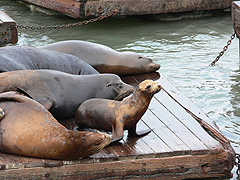This page has been archived and is being provided for reference purposes only. The page is no longer being updated, and therefore, links on the page may be invalid.
| Read the magazine story to find out more. |
|
|
Vaccine Protects Against Leptospirosis
By Sandra AvantJanuary 30, 2012
Scientists at the U.S. Department of Agriculture (USDA) have found that a commercial vaccine is effective against leptospirosis in cattle.
A widespread zoonotic disease, leptospirosis is transmitted naturally from domestic and wild animals to humans. The contagious disease, which is caused by Leptospira bacteria, is spread through contact with food, water or soil contaminated with urine from infected animals. It can affect all farm animals, rodents and wildlife.
Several years ago, retired microbiologist Richard Zuerner, veterinary medical officer David Alt and their colleagues at the Agricultural Research Service (ARS) National Animal Disease Center (NADC) in Ames, Iowa, tested a version of this vaccine and discovered that it induced some protection against experimental infection with Leptospira borgpetersenii serovar Hardjo, the main cause of bovine leptospirosis.
ARS is USDA's chief intramural scientific research agency, and this research supports USDA priority of promoting international food security.
Alt and his colleagues, who work at the NADC Infectious Bacterial Diseases Research Unit, examined the vaccine's potency in reducing the shedding of bacteria, potentially affecting the spreading of leptospirosis in herds. They vaccinated cattle twice with this vaccine or twice with a standard or control vaccine.
To test the vaccine's ability to induce short- and long-term immunity to infection, cattle were challenged with L. borgpetersenii serovar Hardjo three months or one year after immunization.
Scientists found that the vaccine appeared to be effective at both three-month and one-year periods after vaccination. Although the vaccine did not provide complete protection from shedding at one year after vaccination, it induced greater immunologic responses and protection against shedding of leptospirosis than the standard vaccine.
After cattle were challenged three months after vaccination, bacteria were detected in the urine for several weeks, but the cattle appeared to be capable of clearing the infection, whereas non-vaccinated cattle remained infected, according to Zuerner.
Only one vaccinated animal in the year-long study was shown to have bacteria in the kidney at the end of the live challenge, but most animals had evidence of short-term kidney infections that eventually cleared, according to Zuerner.
Although the vaccine was partially successful in protecting cattle against leptospirosis, scientists agree that improvement is still needed.
Choosing the right vaccine depends on identifying the infecting serovar, according to Alt. The diverse organisms of Leptospira bacteria contain more than 200 serovars that can cause the disease.
Findings from this research were published in Clinical and Vaccine Immunology.
Read more about this research in the January 2012 issue of Agricultural Research magazine.

